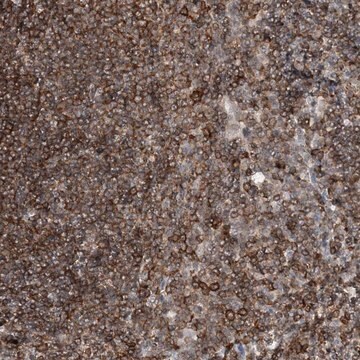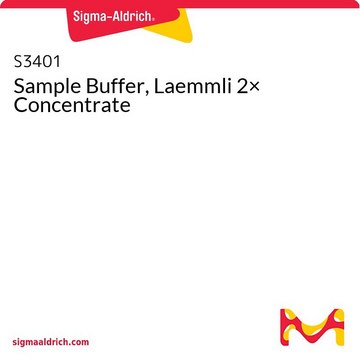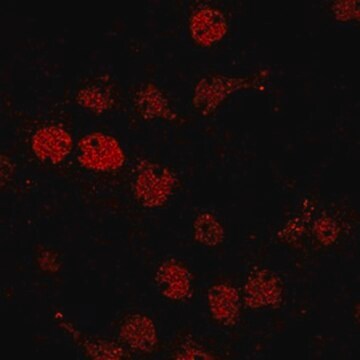MABE1112
Anti-PRMT9 Antibody, clone 128-29-1
clone 128-29-1, from mouse
Synonyme(s) :
Putative protein arginine N-methyltransferase 9, Putative protein arginine N-methyltransferase 10
About This Item
Produits recommandés
Source biologique
mouse
Niveau de qualité
Forme d'anticorps
purified immunoglobulin
Type de produit anticorps
primary antibodies
Clone
128-29-1, monoclonal
Espèces réactives
human
Ne doit pas réagir avec
mouse
Technique(s)
immunocytochemistry: suitable
immunohistochemistry: suitable
immunoprecipitation (IP): suitable
western blot: suitable
Isotype
IgG1κ
Numéro d'accès NCBI
Numéro d'accès UniProt
Modification post-traductionnelle de la cible
unmodified
Informations sur le gène
human ... PRMT9(90826)
Description générale
Spécificité
Immunogène
Application
A representative lot detected a predominant cyotoplasmic PRMT9 localization by fluorescent immunocytochemistry staining of 4% paraformaldehyde-fixed HeLa cells (Yang, Y., et al. (2015). Nat. Commun.
A representative lot immunoprecipitated PRMT9 from HeLa cell lysates (Yang, Y., et al. (2015). Nat. Commun.
A representative lot detected GST fusion protein containing human PRMT9 a.a. 401-550 recombinant fragment, but not PRMT9 a.a. 1-199, 200-400, or 551-895 GST fusion (Yang, Y., et al. (2015). Nat. Commun.
A representative lot detected human, but not mouse, PRMT9 using lysates from various human and mouse cell lines (Yang, Y., et al. (2015). Nat. Commun. 6:6428).
Épigénétique et fonction nucléaire
Modifications post-traductionnelles générales
Qualité
µµ
Description de la cible
Forme physique
Stockage et stabilité
Autres remarques
Clause de non-responsabilité
Vous ne trouvez pas le bon produit ?
Essayez notre Outil de sélection de produits.
Code de la classe de stockage
12 - Non Combustible Liquids
Classe de danger pour l'eau (WGK)
WGK 1
Point d'éclair (°F)
Not applicable
Point d'éclair (°C)
Not applicable
Certificats d'analyse (COA)
Recherchez un Certificats d'analyse (COA) en saisissant le numéro de lot du produit. Les numéros de lot figurent sur l'étiquette du produit après les mots "Lot" ou "Batch".
Déjà en possession de ce produit ?
Retrouvez la documentation relative aux produits que vous avez récemment achetés dans la Bibliothèque de documents.
Notre équipe de scientifiques dispose d'une expérience dans tous les secteurs de la recherche, notamment en sciences de la vie, science des matériaux, synthèse chimique, chromatographie, analyse et dans de nombreux autres domaines..
Contacter notre Service technique







